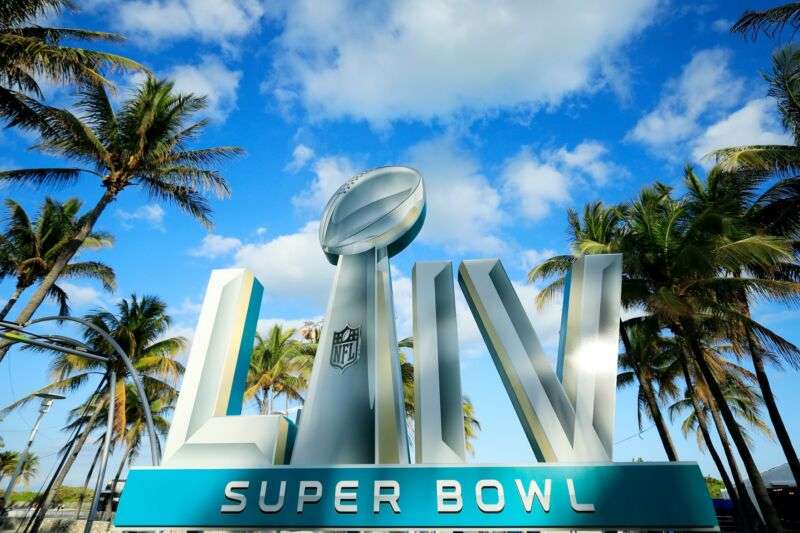
Verizon brings 5G to the Super Bowl—for part of the stadium, anyway

Verizon’s 5G hype train is heading to the Super Bowl, but the carrier won’t tell us whether its new network will cover all the seats in the stadium.
With Super Bowl LIV at Hard Rock Stadium in Miami scheduled for February 2, Verizon emailed a media alert to Ars and other news outlets on Wednesday last week, bragging that it will “power the first Super Bowl featuring 5G.” Notably missing from the news alert was any indication of how many fans will be able to use the 5G network from their seats during the game.
We asked Verizon if all the seats and other parts of the stadium will have 5G access and got a vague answer from the company spokesperson who sent out the media alert: “Fans can access 5G UWB [Ultra Wideband] in the bowl seating area, parts of the concourse, ticketing areas, and parking lot.”
While Verizon’s statement admits the network will cover only “parts” of the concourse and other non-seating areas, the statement that 5G will be available “in the bowl seating area” doesn’t specify whether 5G will reach all or some of the seats. We sent the Verizon spokesperson follow-up emails on Wednesday and Thursday asking whether all of the seats will covered by Verizon 5G but got no response.
Meanwhile, Verizon issued a 5G/Super Bowl press release Friday, claiming that “5G is changing everything” and that “5G built right has the potential to transform the way fans experience football and other entertainment content.” Verizon said it has spent more than $80 million “to enhance its award-winning network to support the Super Bowl this year.”
“Utilizing the extraordinary speed, throughput, and low latency available on its 5G Ultra Wideband network, Verizon is working to take sporting experiences to new heights,” Verizon said. Despite those lofty promises, the press release didn’t say how many of the stadium’s 65,000 seats will have 5G access.
This likely means the 5G network still can’t cover the whole stadium. In September, when NFL season began and Verizon was touting 5G service in 13 football stadiums including the one in Miami, the company acknowledged that the service would only be able to cover “parts” of the seating areas. Verizon told us then that it would expand coverage within the facilities, but five months later, it appears that Verizon 5G still isn’t capable of covering a whole stadium, and Verizon still won’t say how widespread its coverage is in the seating areas.
Verizon also announced 5G coverage in a few NBA and NHL arenas in October but acknowledged to Ars at the time that the 5G would only cover “certain seating areas.”
Millimeter-wave 5G has limited reach
This isn’t surprising, given that Verizon’s early 5G rollout relies on millimeter-wave signals that don’t travel far and are easily blocked by walls and other obstacles. While 5G can also be deployed on the lower frequencies used by 4G, Verizon has said that 5G will only bring big speed increases on higher frequencies. Verizon confirmed to Ars that its 5G network in the Miami stadium uses millimeter-wave frequencies.
T-Mobile said its 5G coverage—using both low-band and millimeter-wave spectrum—is far more extensive than Verizon’s in the area surrounding the stadium in Miami. T-Mobile also said it has deployed millimeter-wave 5G in the “lower bowl” at the stadium, but it seems that Super Bowl attendees are more likely to benefit from improvements to T-Mobile’s 4G LTE network.
“T-Mobile more than doubled LTE capacity at Hard Rock Stadium so customers can stream, tweet, post, and chat about every big moment from the game,” the carrier said.
AT&T also said it has some 5G coverage at the stadium in Miami. But like T-Mobile, AT&T’s announcement got more specific when talking about its 4G coverage. Thanks to upgrades to its Distributed Antenna System at Hard Rock Stadium over the past few months, AT&T said it now “provide[s] over 300 percent more LTE capacity than what was available at the start of the football season.”




